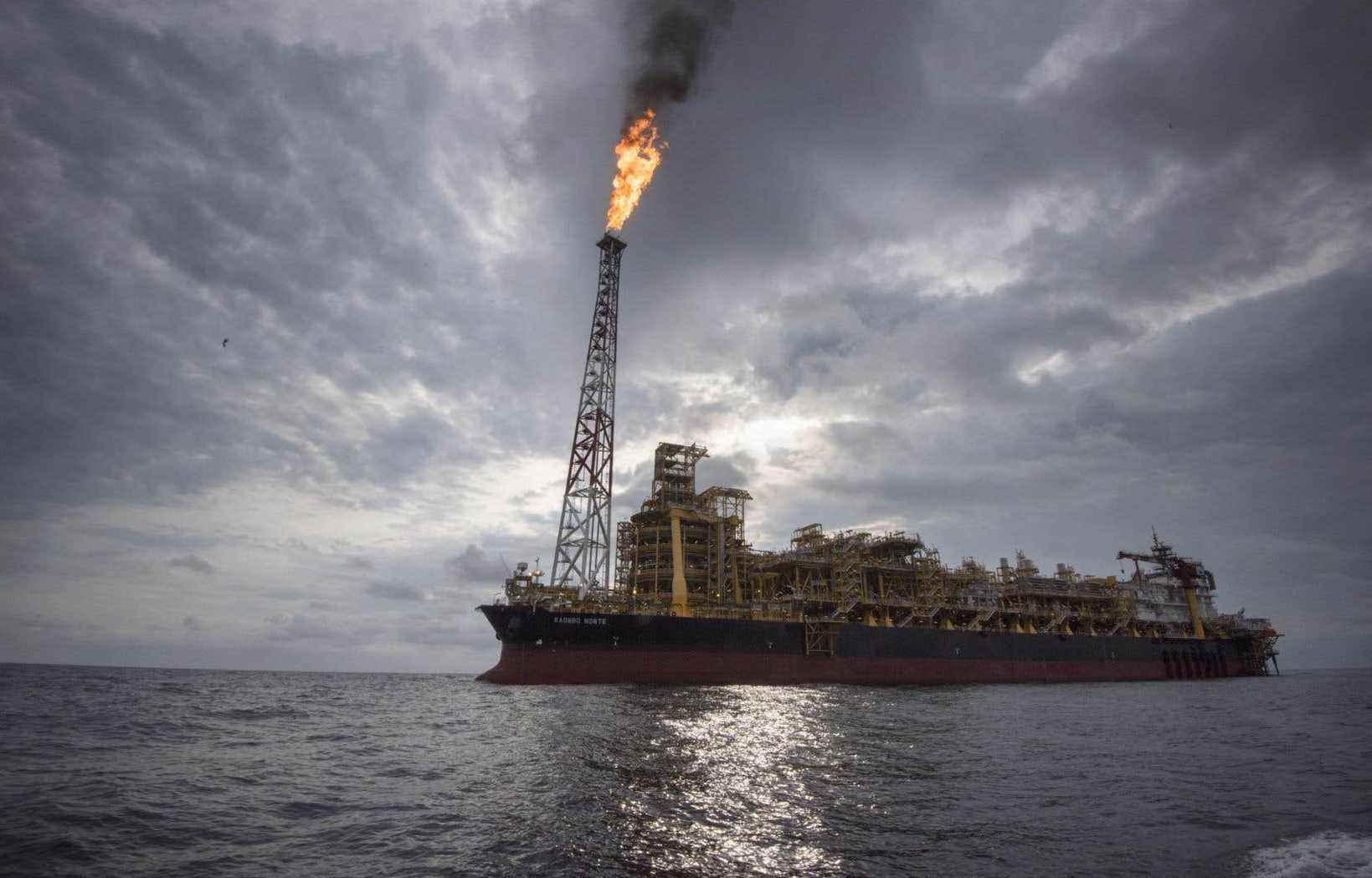Two days after the publication of a new scientific report which demonstrates the urgency of reducing our dependence on fossil fuels, the Trudeau government announced on Wednesday that it approves the Bay du Nord oil project. The Norwegian oil company Equinor will exploit more than 300 million barrels of oil in the marine environment, in an area known for its rich biodiversity.
After twice postponing his decision on this new development project, the Minister of Environment and Climate Change, Steven Guilbeault, officially gave the green light to Bay du Nord. The decision was formalized in a press release at the end of the day.
The federal government announces that its green light for the project is “subject to the strictest environmental condition ever imposed” in terms of greenhouse gas (GHG) emissions. According to the statement, 137 “legally binding” conditions are imposed on the project developer.
“The Bay du Nord development project is in line with the government’s plan to achieve an overall reduction of 40% of emissions compared to 2005 levels by 2030”, maintains the ministry.
Controversial project
Environmental groups have been pleading for several months for a rejection of the Bay du Nord project, judging that it is incompatible with Canada’s climate objectives and with the fight against the climate crisis. On Monday, a new report from the Intergovernmental Panel on Climate Change (IPCC) also warned against the impacts of our dependence on fossil fuels, stressing the need to drastically reduce oil production in course of the next few years.
The Newfoundland and Labrador government considers Bay du Nord to be a “cleaner oil” project. It estimates that it will emit less than eight kilos of greenhouse gases for each barrel of oil produced, compared to an average of 16 kilos for similar projects elsewhere in the world. However, this balance does not take into account the combustion of oil during its final use.
In November 2020, Equinor said it aimed to achieve “carbon neutrality” by 2050. To achieve this, the multinational has pledged to reduce emissions from its oil and gas production, while also investing in renewable energies. renewables and new technologies.
Since Minister Guilbeault was assessing the Bay du Nord project under the former Canadian Environmental Assessment Act, adopted in 2012 by the Harper government, he did not have to take into account in his decision compliance with emissions targets. greenhouse gases (GHG) to meet Canada’s targets or the Paris Agreement, for example, explains lawyer Anne-Sophie Doré, from the Center québécois du droit de l’environnement.
“It’s a shame to see projects still being assessed under the old law, because climate considerations have changed a lot since then. [son adoption]. And to see that we cannot take into consideration the climate impact of projects in the same way, ”she laments.
300 million barrels
Equinor holds exploration licenses in an area 470 kilometers off the coast of Newfoundland. It is in this area, where the seabed is more than 1,000 meters deep, that it wishes to drill up to 60 operating wells, while continuing exploratory drilling.
According to company estimates, more than 300 million barrels of oil could be exploited by 2058 (another more recent estimate puts it at 1 billion barrels), reads the report produced by the Impact Assessment Agency of Canada (EIAC). The oil company would pump its first barrels by 2028.
“Taking into account the implementation of the mitigation measures, the Agency concludes that the proposed development of Bay du Nord is not likely to cause significant adverse environmental effects,” reads the report. devaluation. The AEIC considers that “the measures recommended to mitigate potential environmental effects”, such as the impacts of an oil spill or the effects on marine ecosystems, are sufficient to reduce the risks.
Biodiversity
The federal assessment nevertheless highlighted several environmental issues. The Equinor project is located in an “ecologically and biologically significant area of the United Nations Convention on Biological Diversity”, but also in “vulnerable marine ecosystems”. The drilling will also be carried out near recognized critical habitats of endangered species, bird sanctuaries and an important “marine refuge” set up by the Trudeau government to achieve its objectives of protecting the oceans.
This maritime region is also recognized as an important habitat for several species of commercially exploited fish, 14 species of birds at risk as well as about fifteen species of marine mammals, which are particularly sensitive to underwater noise pollution. Equinor plans to do seismic surveys there.
As for the risks of an oil spill at sea, the AEIC’s interim report considers these to be minimal. The document also mentions that in the event of an oil “eruption” out of control, a “capping system” may have to be installed at the head of the operating well. But the deployment of this system would take “18 to 36 days”, since this equipment must be transported from Norway or Brazil.
“Catastrophe announced”, denounces the Bloc
The Bloc Québécois sharply criticized the Trudeau government’s decision in this matter during question period on Wednesday.
“I don’t know what the Prime Minister has found that makes the IPCC look bad when it comes to expertise, but if read properly, the announcement [attendue] this afternoon of the approval of Bay du Nord is a disaster announced on a planetary scale,” said Bloc leader Yves-François Blanchet.
On several occasions, Prime Minister Justin Trudeau has risen in the House to praise his emissions reduction plan unveiled last week, according to him “one of the most comprehensive in the world. »
“No damn common sense. Steven Guilbeault has just lost all credibility. After a weak plan with gifts to the oil companies, this absurd decision, ”tweeted NDP MP Alexandre Boulerice.
More details to come.
